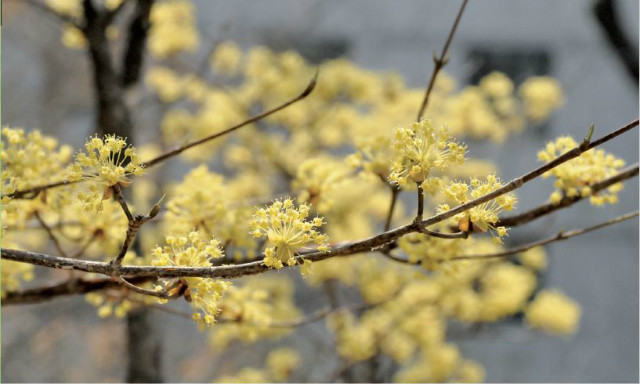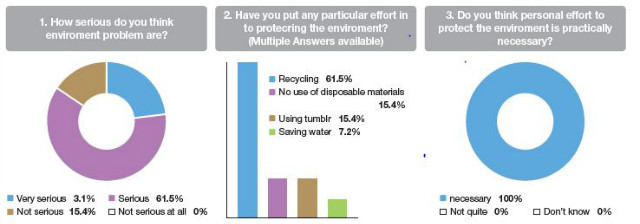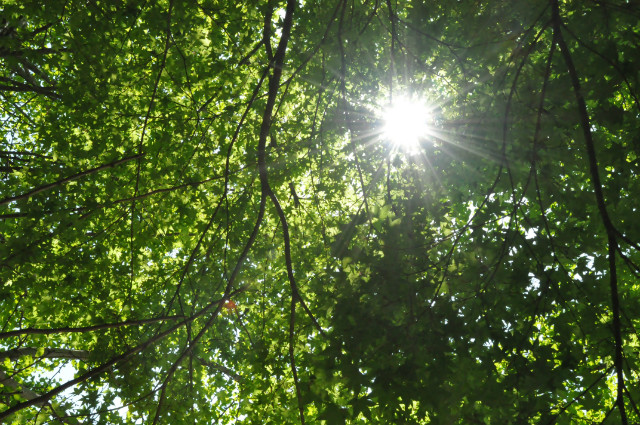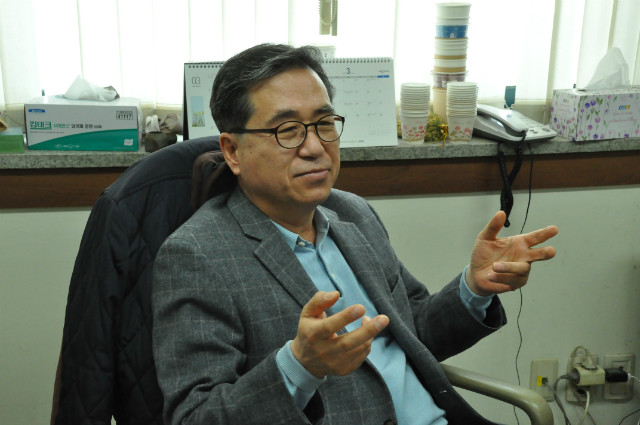About 40 years ago, the idea of purchasing drinking water was considered to be ridiculous. Nowadays, people really purchase drinking water whether it is in an actual bottle or from a water purifier. Around ten years ago, there was a well-known phrase describing Korea as the, “country with four clear seasons,” but now it is hard to find this attribution any more. The term “global warming,” which was considered to be just an academic term for a while, has come to represent a tangible phenomenon that affects the daily life of every human being. Clearly, the climate has changed fast and in an unfriendly way for humans. The trustworthy scientific magazine 「 Nature 」 published the journal in 2019 saying that the climate crisis has already crossed the tipping point. According to climate scientists, the more destruction and pollution humans cause, the worse human life will be. The self-cleaning ability of the earth is overwhelmed by human activities. The impact of climate change is going to be tremendous and unpredictable. Given this situation, shouldn’t it be our top priority to deal with the protection of the natural environment? If humans keep leading their lives as they have been so far, nature will bring disasters that destroy every comfort humans wish to have. Everyone has to awaken from the ignorant state which humans take their comfortable lives for granted. The Pharos surveyed how Kyonggi University students feel about this matter and had an interview with a professor. The Pharos also did research on what environmental problems are occurring these days and what actions are available for university students to take.
< Survey results >
In answer to the question, “How serious do you think environment problems are?” 61.5% said “serious,” 23.1% “very serious” and 15.4% said “not serious.” To the question, “Have you put any particular effort into protecting the environment?” 61.5% responded “recycling,” and other answers included “not using disposable products” and “using tumblers.” All respondents answered “necessary” to the question, “Do you think personal effort to protect the environment is practically necessary?” Last, the Pharos asked, “Is there any policy or business you want the school to implement for protecting the environment?” and the most answered that the common request was for a discount for tumbler users at campus cafes. A student also suggested that since all campus cafes have many customers and most of them spend a long time on campus, it is better to offer straw-free cups instead of paper straws.
1. How serious do you think environment problems are?
- Very serious 3.1%
- Serious 61.5%
- Not serious 15.4%
- Not serious at all 0%
2. Have you put any particular effort in to protecting the environment? (Multiple Answers available)
- Recycling 61.5%
- No use of disposable materials 15.4%
- Using tumblers 15.4%
- Saving water 7.2%
3. Do you think personal effort to protect the environment is practically necessary?
- Necessary 100%
- Not quite 0%
- Don’t know 0%
Natural movements that do not deviate significantly from the climate average are called “climate fluctuation,” and conditions outside the range of climate fluctuation are called “climate change.” The reasons for climate change can be found in global warming. Global warming means a distinct temperature increase from the early 20th century due to increased fossil fuel emissions after the Industrial Revolution. The effects of rising temperatures on the earth are similar to those of diabetes on our bodies. When our bodies become unable to control blood sugar due to diabetes, there are numerous complications such as heart disease and stroke. When global warming destabilizes the earth’s control system, not only will the climate become fickle, but there will also be bad phenomenon such as rising sea levels, acidification of oceans, reduced food production, and biodiversity destruction. The Pharos wants to see what changes are related to this phenomenon.
< Cold waves >
In January 2017, middle and eastern Europe, and some Russian territories faced a record-breaking cold wave. Germany and Italy shut down their roads and had casualties because of the cold wave with temperatures of lower than -30 degrees celsius. In 2019, Austria had tremendous snowfall of over 3 meters, which shut roads, trails, and flights down. At the same time, the Balkan Peninsula also had heavy snow so electricity and the internet were unavailable, and authorities declared a national emergency. Schools in Serbia also closed because of snow blast. In the same year, the middle-west and east of America were seriously damaged by snowstorms. People died and flights were cancelled. and Virginia state declared an emergency. Furthermore, the Sahara Dessert, where it barely snows because of a lack of humidity, had two heavy snowfalls of over 40 centimeters in height in 2016 and 2018. Bangladesh, known for its hot weather, experienced temperatures under 2 degrees celsius. Considering its average temperature in the winter is 7 to 12 degrees celsius, that was exceptional.
The cold wave was directly triggered by global warming. There is a Polar Vortex in polar areas like Antarctica and the North Pole. The Polar Vortex is a low atmospheric vortex which blows from the troposphere to the stratosphere. The Polar Vortex is typically surrounded by a jet stream, which stops the cold air of the Polar Vortex from passing through it. When the jet stream works properly, the cold air of the polar area cannot come down to lower areas. However, global warming heats the polar area, so it weakens the jet stream, allowing the cold air of the Polar Vortex to cross the jet stream. As a result a cold wave happens.
< Heat waves >
Currently, the global warming trend is accelerating beyond the point of natural fluctuation. This causes frequent heat waves, and the size and damage of the heat waves are growing every year. A heat wave is a disaster that threatens life. How long the heat wave lasts is crucial to the number of deaths because exhausted bodies caused by excess heat cannot recover from a continuous heat wave. Also, heat wave damage does not increase gradually. The damage from a heat wave grows rapidly at some times, so the effect is similar to making popcorn: At first, a few seeds with weak shells burst, and at some time later all the popcorn seeds burst at once.
< 2020 Heat Wave Hell Scenario (predicted in 2014) >
(Source: National Disaster Management Institute)
▶ In 2014, a researcher at the National Disaster Management Institute wrote a possible heat wave forecast scenario for 2020 through a big data analysis. In Korea, the annual average number of heat wave days, in which the highest temperature is above 33°C for more than two days in a row, is about 10 days. It is predicted that the 2020 heat wave will last more than 30 days if both the dry monsoon and the heat wave occur at the same time.
In the first week, the spring drought will continue, and the drought will continue throughout the early part of the heat wave. In the second week, the first death will occur, and a waterborne epidemic will come in the third week. At the same time, the number of deaths caused by fever will increase, and the number of incidents and accidents caused by discomfort will surge. The fourth week will see an increase in manslaughter cases and deaths from fever. Cholera and malaria, which used to be prevalent only in subtropical climates, will be very widespread. Prices are expected to soar and people will suffer from a lack of drinking water due to the spread of damage to primary industries including agriculture.
The average number of heat wave days in our country is seven days. According to a study by the National Institute of Meteorological Research, the number of heat waves days in Korea at the end of the 21st century will be 13 days if a climate change scenario in which greenhouse gases are reduced to some extent occurs. If the gases are not reduced at all, the number of days is expected to double to four times more than now. The National Disaster Management Institute predicted that the number of heatstroke deaths in the 2040s would be five to seven times higher than it is now. Sometimes the rise in temperature does not kill people, but the extreme weather caused by global warming can lead to death. Therefore, understanding how climate change affects extreme weather is necessary for our survival. Also, people living in countries, excluding those in tropical regions, must learn to cope with heat waves due to their low physiological adaptability and lack of knowledge regarding how to avoid heat.
In other countries, terrible heat waves have been observed. In 2018, Australia experienced a severe heat wave unlike anything that had been witnessed in more than 150 years, so sports matches were cancelled and the asphalt of highways melted. Furthermore, 500 brain-scorched bats were found in the country. Abnormally hot temperatures were also observed in countries in northern Europe, such as Sweden, Finland and Norway. Forest fires happened more than was usual and serious secondhand damage from heat waves occurred around the world. Why did it happen? The concept is pretty similar to how a cold wave occurs. There is a subtropical jet stream that blows at a lower level than the jet stream. A heat wave happens when the subtropical jet stream becomes weak. When it becomes weak, air circulation heats up the air continuously. To sum up, cold waves and heat waves are both triggered by the malfunctioning or weakening of the jet stream.
< Fine dust >
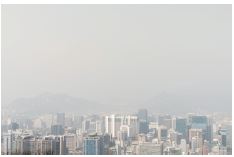
In 2018, the Korea Institute for Health and Social Affairs surveyed the level of anxiety felt by citizens regarding various risks. The most anxiety-causing item was air pollution, such as fine dust. Most Korean soil is acidified, with urban soil being especially affected. In acidic soil, the number of microorganisms that decompose various organisms decreases, making them less nutritious. Yellow dust is mostly alkaline, so it acts to neutralize acid soil. When yellow dust sweeps through, it enriches the marine ecosystem by spraying iron and minerals into our seas and the North Pacific Ocean. Weather conditions can cause the dust to move farther before settling. Accordingly, when wind and precipitation change due to climate change, the occurrence and movement of soil dust are different. This is likely to change the ecosystem that has been maintained for a long time and is dependent on dust. This is another reason why we should be careful about climate change. In 2019, the World Health Organization (WHO) announced that air pollution is one of the ten main threats to human health. It is said that 7 million people in the world are killed by exposure to air pollution every year. Under the 2015 Paris Climate Change Agreement, not only would reducing fossil fuel use reduce climate change, but it would also reduce air pollution, which could save 1 million lives every year, the World Health Organization said. We should have a humble and serious attitude toward natural disasters to prevent air pollution.
The world population will grow to about 9 billion to 10 billion by 2050, and all of these people have the right to lead an abundant life on this planet. To be able to create and sustain such a state, we now have to put some restrictions on ourselves. Personal efforts to protect the environment are familiar, but collective efforts are unfamiliar. Among collective efforts, what kinds of efforts and alternatives are being made for the environment, especially in universities? The Pharos will look at some examples.
Public transportation helps solve environmental problems and reduces traffic congestion by reducing the amount of cars in use. The higher the number of people using public transportation, the lower the amount of environmental costs per person. The country is moving to encourage the use of more eco-friendly vehicles that are powered by electricity or hybrids as well as public transportation. Kyonggi University is also encouraging the use of public transportation. Starting this year, the convenience of transportation and public transportation has improved as Kyonggi University has begun its Suwon bus service. Also, Suwon City said it would push for the establishment of an electric charging facility to operate eco-friendly electric buses in the area in the future, and that electric buses would be used first. “The expansion of public transportation and adjustment of bus routes are expected to ease complaints such as the problem of the nearby long-term parking of buses, which will increase the benefits of bus use,” a Suwon City official said. By promoting the use of public transportation, the increase in air pollution and global warming can be slowed.
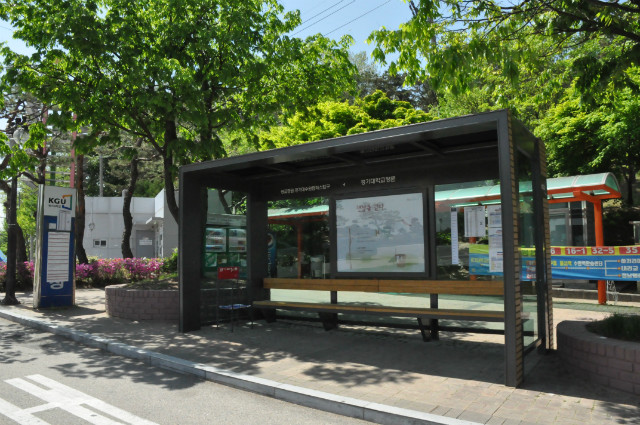
The Ministry of the Environment provides green-campus universities with different benefits almost every year to create a green environment. Among universities, Incheon National University has been promoting renewable energy by building a related system since 2012 with support from the Ministry of the Environment and the Korea Environment Corporation’s green-campus project. Incheon National University won the Environment Minister’s Award at the “2019 Low Carbon Life Competition” organized by the Ministry of the Environment. Incheon National University is pushing ahead with the project with the goal of continuing to implement energy conservation by replacing campus lights with LEDs and promoting eco-friendly growth with communities by, for example, introducing programs to reduce greenhouse gas emissions. For the establishment of the smart green-campus, the school is striving to establish a zero-energy building by combining various technologies from advanced companies such as Siemens AG. In addition, universities are providing education to nurture future eco-friendly talent such as green-campus education for students and club activities that reflect the government’s eco-friendly growth policy. In the future, Incheon National University plans to continue its attempts to become a leading eco-friendly green-campus and expand its dream of having a green-campus environment to operating sustainable businesses with voluntary participation by university members.
The Korea Maritime and Ocean University will demonstrate research and development equipment for the nation’s first major electric propulsion ship system. With IMO 2020 starting this year, a test bed has been established at the school to speed up the development of the ship’s electrical system. IMO 2020 was introduced by the International Maritime Organization in January 2020 and prohibited the use of high sulfur fuel oil, which has a 3.5% sulfur content, and required the use of low sulfur fuel oil with a 0.5% sulfur content. The established test bed will greatly help develop technologies of local industries and research institutes that have had difficulties in the research and development of ship electric propulsion systems and eco-friendly ship systems. The establishment of an empirical test bed will help to localize the development of eco-friendly ship system equipment, which has been monopolized by Europe. “Under environmental regulations, the country's first test bed for electric propulsion systems and an eco-friendly exhaust gases treatment facility will play a major role in developing technologies for the shipbuilding and marine industries,” the school official said.
These examples allowed us to recognize environmental problems and to observe how universities are moving to solve them. Then what should the school do and what other environmental issues should be watched with interest besides basic environmental issues? The Pharos had an interview with Professor Lee Si-jin of the Department of Environmental Energy Engineering about environmental issues in depth and investigated whether there were other ways to protect the environment besides the previously mentioned environmental protection practices.
Q. Please introduce yourself briefly.
A. Hello, I am Lee Si-jin, a professor in the Environmental Energy Engineering Department. After finishing my doctorate in environmental engineering, I came to Kyonggi University for the first time when it opened the Environmental Energy Engineering Department in 1988. Starting in 2013, I worked for a public company called the Korea Environment Corporation as a director for 3 years and 2 months before returning to the school in 2016 where I have worked until now.
Q. Climate change, fine dust, and other environmental pollution problems are occurring. What would you choose as the three most serious problems?
A. I can talk about that question for hours. The environmental problems of the earth and our country are actually different. The first problem we should be interested in is global warming. This is because global warming affects all areas. Maybe, the first and second problems can be global warming because things such as rising sea levels and the flooding of large cities due to increased sea areas are linked to global warming. Global warming is a problem faced by all the people on earth, regardless of the country they may reside in. The people of Tuvalu, in the Pacific Ocean, are on the verge of drowning as the water level becomes higher, even in normal times. Countries such as this are facing serious environmental problems, but our country still doesn’t think much about the issue.
The second problem is microplastics. If you go to North Gyeongsang Province, you will find a plastic island. In each country, disposable plastics are used, thrown away, washed away by floods, subdivided by sunlight, and brought together by currents. Meanwhile, they have become like an island. If a person catches a fish on the south coast of Korea and dissects it, microplastics come out. Also, Jeju Island fostered the growth of turtles in its nearby sea, but they were found dead in waters off Busan soon after. People were wondering why the turtles died, so we dissected one, and a lot of microplastics were found in its stomach. This means that the turtle thought the plastic was food and died of starvation because the plastic was in its stomach and it wasn’t hungry. Plastic is thrown away without being reused it, so it goes into the ocean and is broken down into microplastics. The students may not know this because students can’t see the problem clearly, but it’s a problem that the whole planet has.
The third problem is waste disposal. Our country operates one of the large landfills in the world despite its small territory. It is the Incheon Capital Area Landfill. By the way, even if we cannot reduce the amount of waste for five years or 10 years, we will still not have enough places to serve as landfills. Instead of right now, we have to think about the impact of the problems in five or 10 years, and not just the jobs involved, but everybody has to participate.
Q. Besides personal efforts, is there any policy or environmental technology that the country is promoting for the protection of the environment?
A. It's so endless that it’s hard to be specific. Roughly centered on water problems, the country manages water quality and sends water to each individual. Each person gets 300 to 350 liters of water, but we drink less than 2 liters of water a day. The rest of the water is used for washing, kitchen activities and waste water. In the 1970s, there were no sewage treatment plants and waste water went into the streams. Now people are taking the water thrown into the sewers and making it clean in sewage treatment plants. To further this process, the government supports the development of sewage treatment technology. Consequently, there is a sewage treatment business group at Kyonggi University, and it has received funds of 8 billion won a year from the nation. In the case of the Four-Rivers Project, four rivers receive the outflow from tap water in the country rather than private companies. The four rivers are monitored 24 hours a day to prevent changes in water quality and difficulties in reactive measures. In addition, in the case of sewage treatment plants nationally, sensors are used to monitor situations in real time before purified sewage is exported to the streams.
The problem of waste disposal is also something that the country is working to ensure that we are not uncomfortable within our daily lives. In the past, the goal was to dispose of waste quickly, but now technology to convert waste is the focus. Korea has a population of 50 million, and there are 45 million tons of waste, but it is disposed of by the country rather than individuals. We can say that local governments are doing that work in places that are invisible to us in our daily lives. At Kyonggi University’s research lab, people are working on a technology that creates usable energy by making coal gas. It's a technique that transforms food waste into coal, which can then be used as fuel. Research continues without stopping to make technology more efficient and maximize effectiveness.
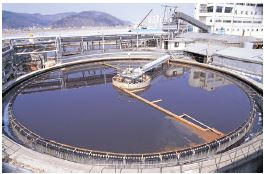
Everyone knows that the environment is important to humans. However, while there are those who realize this importance and act accordingly, there are those who don’t concern themselves with environmental issues. If we look at the problems that are occurring, such as the rising greenhouse gas rate, water pollution and climate change, the discussion of environmental protection in relation to human activities is a matter that has already been acknowledged by the scientific community. Now we have to ask, “How should we make the future?” not “What will the future be?” The danger of environmental pollution is a matter that challenges the way humans exist in the world. Of course, it is not only environmental protection groups, related agencies and governments who are affected by this issue, but “everyone living on the earth.” The key question is whether governments will pay the costs to respond effectively to this problem now or face catastrophic risks and pay huge costs later. The certain fact is that the slower the response, the bigger the cost to be paid will be. Like the adage “Big trouble comes in small packages” says, if we keep making small changes, we might face the problem getting out of control and causing a lot of damage. Environmental protection is not an option but an essential obligation. As the school is one part of the larger environment, the school needs to play a role in preserving the environment and must know the importance of the environment. Rather than releasing our collective grip, students should find ways to protect the environment together with society and at least join in the small practices of the environmentally conscious lifestyle. Students’ actions influence the environment.
Planning Editor•KIM JIN•coo0714@naver.com
71st Reporter•PARK SINUI•dean0305@naver.com
 Freedom Given to Youth: An Opportunity for Choice or a Burden of Constraint?
“Are we truly free today?” Classical literature is far more than time-honored stories. It offers profound insights into human nature and society that transcend time, remaining a valuable resource for examining the challenges our world faces today. This article will draw on George Orwell’s 1984 and Charles Dickens’ Oliver Twist to explore the contemporary issues of youth housing and the emergence of a surveillance society ...
Freedom Given to Youth: An Opportunity for Choice or a Burden of Constraint?
“Are we truly free today?” Classical literature is far more than time-honored stories. It offers profound insights into human nature and society that transcend time, remaining a valuable resource for examining the challenges our world faces today. This article will draw on George Orwell’s 1984 and Charles Dickens’ Oliver Twist to explore the contemporary issues of youth housing and the emergence of a surveillance society ...

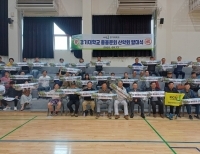 [단신] 산악회, 본교 동문의 버팀목이 될 수 있도록
[단신] 산악회, 본교 동문의 버팀목이 될 수 있도록
 [사회메인] 노인 인구 1,000만 시대, 준비 없는 사회가 불안해
[사회메인] 노인 인구 1,000만 시대, 준비 없는 사회가 불안해
 [네컷만화] 라벨링 문화
[네컷만화] 라벨링 문화
 [진리터] 결국 우리 모두 돌아볼 것이니
[진리터] 결국 우리 모두 돌아볼 것이니

 목록
목록




